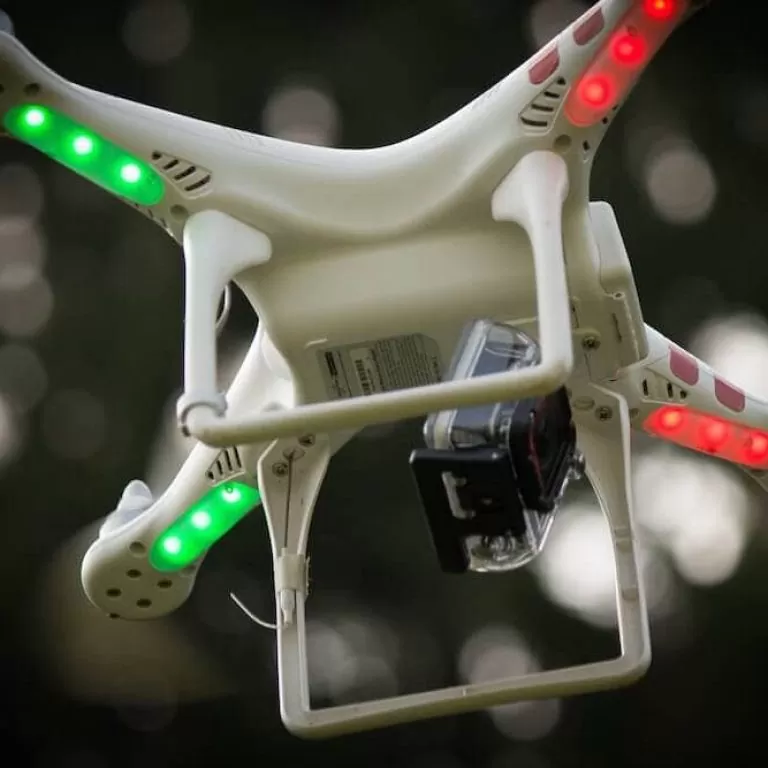
News Autonomous travel – the future for drones?
Earlier this year it was reported that autonomous drones will begin transporting passengers and their luggage around Dubai come July.
The Ehang 184, which was unveiled at the global electronics and consumer technology trade-show CES last year, can travel for approximately 31 miles carrying one person with an additional load of up to 100kg.
Like Uber for the skies, these aerial taxis will be available to call via a mobile application. Entering your destination onto a map, the drone then calculates the route and transports passengers via a series of landing spots as it is unable to fly directly.
Described as ‘personal helicopters’, rather than one large rotor above the body like on most conventional drone models, these taxis have four rotors situated underneath.
Safety in the skies?
This technology yields several potential benefits for Dubai.
As it is the largest and most populated city in the United Arab Emirates, the Ehang 184 could help to ease congestion problems somewhat by taking passengers through the skies.
Designed so that its propellers fold inwards upon landing, these drones will be able to fit in a single car park space meaning that it could potentially work effectively in busy areas.
Concerns regarding the safety of passengers in such autonomous vehicles may be tempered by Ehang’s “fail safe” system, which prompts it to land at the first opportunity if anything were to fail or malfunction.
The drone also communicates via encrypted channels to protect itself from possible hijacks and other external threats.
Tests have also been carried out in Las Vegas in the US in the hopes to implement the Ehang as part of the state’s transport system.
Global developments
Drones will potentially become an integral part of future global digital integrations and developments, particularly in commercial sectors, but also as part of rescue operations and emergencies.
The news of retail giants Amazon utilising drones to revolutionise their services has led to debates about the safety of such developments, as well as concerns of the potential consequences of such burgeoning applications on the courier and shipping industries.
The worldwide market for flying robots is estimated to be valued at more than $127 billion – so this is clearly big business.
While such economical concerns are valid, particularly at a time of much political and social upheaval in some parts of the world, drones are proving increasingly relevant to services that help to ensure public safety.
The accuracy of data that unmanned aerial vehicles can provide has proven effective for surveillance, as they can cover more ground and provide more definitive digital readings than a human surveyor.
Such precision can be especially beneficial in terms of seeing farther than the human eye can see. Most drones are fitted with sensors which works particularly well for large scale infrastructural developments, or for work that needs to cover a lot of ground.
Human versus machine
An ‘eye in the sky’ can also improve safety in these kinds of environment.
Drones surveying construction sites have helped to reduce accidents in this sector, capturing people not wearing the appropriate safety gear, as well as those who are negating in potentially hazardous behaviour.
Drone applications are also being used to aid agricultural work and could be employed on the front line in military situations to resupply troops.
Regulatory controls currently place certain limits on drone practices, inhibiting where they can fly and what they can do. There are also limits on their weight, endurance, and payloads.
Concerns surrounding public privacy and the potential for drones to be used in line with criminal activities remain.
These concerns may be associated with an innate fear of unmanned machines that have been the subject of many science fiction and action/adventure movies, like I, Robot (2004) and the Terminator (1984-2015) franchise.
Although autonomous flight has the potential to be safer and faster than human activities, machines that are not controlled by humans still fuel such psychological fears.
Whether the benefits will eventually outweigh the current hurdles and put such fears to rest, still remains to be seen.